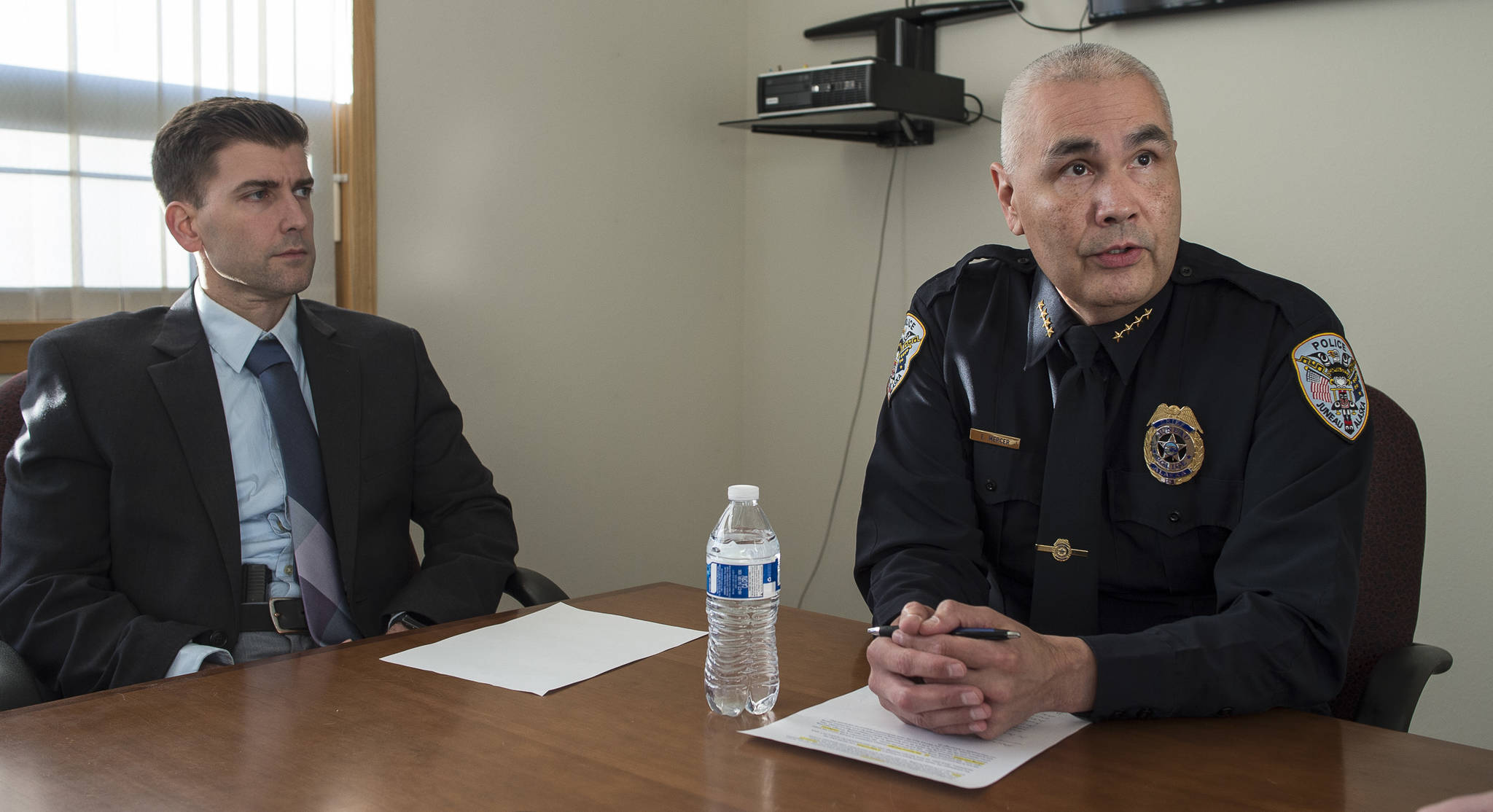On Thursday, the Juneau Police Department intercepted a shipment of drugs coming off a plane at the airport.
It wasn’t a big bust; it was an ounce of cocaine, an ounce of meth and a half-ounce of heroin. James Remington Elisof, 35, was arraigned Friday for three counts of making or delivering drugs, according to electronic court records.
But the effort still served as an example of the department’s approach to drug enforcement. JPD Lt. Jeremy Weske, who heads up JPD’s drug unit, said the department has focused its efforts on what are called interdictions — intercepting packages as they come into town. Instead of making smaller busts in town, they’re focusing on entry points to Juneau, he said.
“Those interdictions are now our bread and butter, whether that’s postal or on the airlines or through the ferry,” Weske said. “That’s really where we’re focused.”
[Drug arrests at airport, in California pertain to heroin, meth trafficking in Juneau]
In the coming months and years, Weske and his co-workers are going to get more resources to make those busts more frequently. In April 2018, the Office of National Drug Control Policy named Juneau, Anchorage and Fairbanks as a collective High Intensity Drug Trafficking Area (HIDTA).
As a result, federal government money will soon be flowing into the state to help these areas. JPD Police Chief Ed Mercer said $2.5 million is coming in this fiscal year (which started for the federal government at the end of October), and that the statewide HIDTA board will make decisions about how to allocate that money.
The HIDTA board includes Mercer as well as other law enforcement representatives from Anchorage, Fairbanks, Kenai, Bethel, the Alaska State Troopers and the Attorney General’s Office, among others. Forming this board was the first step, Mercer said, because the board will make decisions about how to allocate the funding.
One of the aims of HIDTA is to get law enforcement agencies to communicate more with each other, Mercer said. Agencies in Alaska were already working together, Mercer said.
“In the state of Alaska, we’re a small law enforcement family,” Mercer said. “We were already doing that. HIDTA is just only going to make it better as far as having the ability to share information, having the ability to train together, having the ability to fund drug operations throughout the state.”
[State making progress in fight against opioid addiction]
Mercer said they’re hoping to get a couple hundred thousand dollars at least for Southeast. Training costs and operational costs were the main ones Mercer talked about, but he said there might be other ways to allocate those funds. It depends on need. If Buddy the K-9 dog nears retirement or needs a partner, for example, they might allocate money to the K-9 unit.
The money coming to Southeast will be allocated to Southeast Alaska Cities Against Drugs (SEACAD), a regional task force that includes AST, JPD and other law enforcement agencies in the region. Mercer said there used to be more federal funding for SEACAD, and that the operations of the task force have lessened as a result in recent years.
“Going out and doing covert drug operations is very expensive,” Mercer said. “We’re very excited to move forward and know that we can continue to exist as a task force down here to do our jobs.”
JPD’s drug unit is fully staffed, Mercer said, but they hope to add a sergeant at some point in the future to allow Weske to do more administrative duties.
With Juneau serving as a hub for Southeast when it comes to drugs, JPD ends up being involved in many operations throughout Southeast. Weske explained that with a little more funding, JPD can pursue more leads around Southeast.
“It might need to be a fairly big case before you are flying people down to a different city,” Weske said, “but if we have this federal money, that threshold gets lower.”
An update on drug seizures
Methamphetamine continue to be the most-seized drug in Juneau in terms of volume, according to JPD annual reports.
The amount of drugs seized in 2018 is not available yet, as JPD usually releases its annual crime report in the summer after a year is over (so full 2018 numbers should be available in July or August 2019). In 2017, JPD seized more than 3,900 grams of meth. By JPD’s estimation, that’s more than $1 million in street value. Next on the list was cocaine (1,121 grams) followed by heroin (1,065 grams).
In the first quarter of 2018 (the most up-to-date statistics), Weske said, JPD seized 1,000 grams of meth and 416 grams of heroin. All of these totals are large increases from 2016 drug seizures, which resulted in 1,235 grams of meth, 107 grams of heroin and 87 grams of cocaine seized. The leading drug seized that year, by far, was marijuana (4,077 grams) prior to the state legalizing it.
The wheels are moving, albeit slowly, to getting a surge in funding for SEACAD. Mercer said the HIDTA board is poised to select its leadership (executive director and financial officer) and decisions should be made relatively soon as far as where the federal funds go.
“I think you can tell we’re excited to move forward,” Mercer said. “Money is going to start eventually coming our direction as far as for us to continue our drug enforcement efforts out there.”
• Contact reporter Alex McCarthy at 523-2271 or amccarthy@juneauempire.com. Follow him on Twitter at @akmccarthy.

